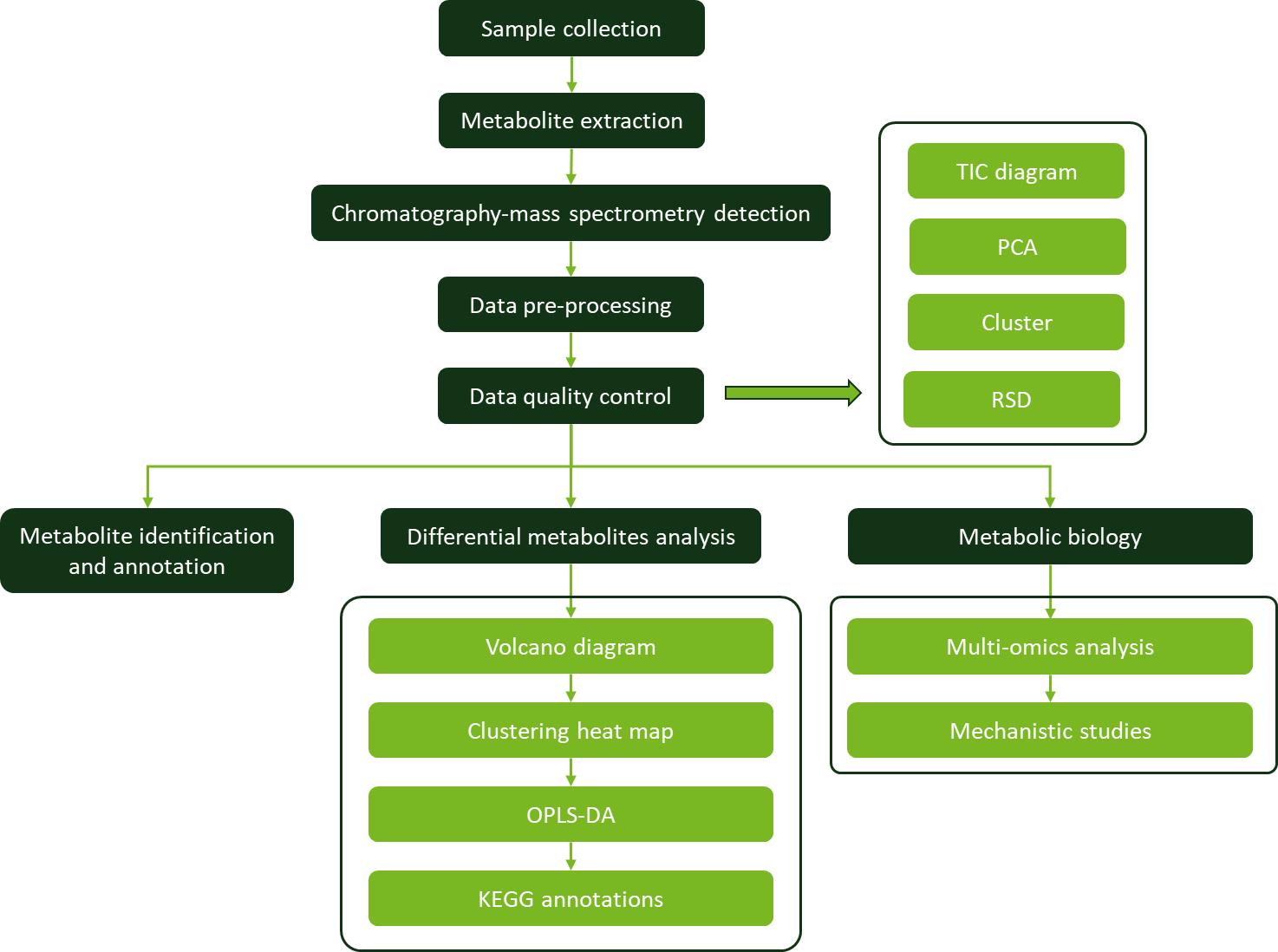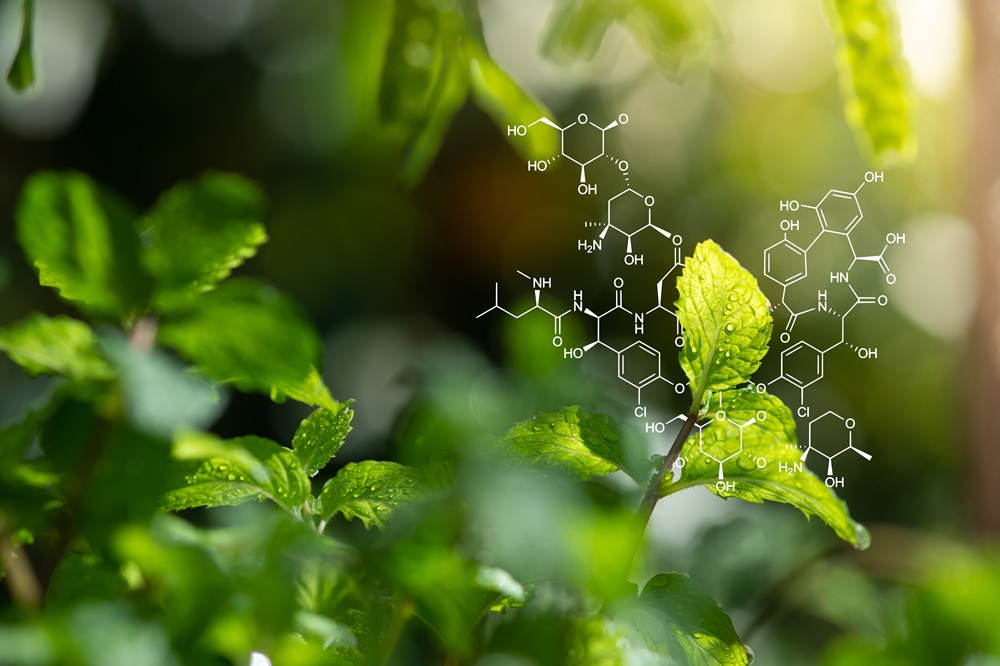What is Pinene?
Pinene refers to a class of monoterpene characterized by their bicyclic structure and distinct pine-like aroma. It exists in two primary forms: α-pinene and β-pinene, both of which are found naturally in various essential oils and resins. α-pinene is predominantly found in pine tree oils and is recognized for its role as a flavoring agent, fragrance component, and potential therapeutic compound. β-pinene, while also contributing to pine oil's scent, is noted for its application in industrial and pharmaceutical settings.
Pinene analysis is crucial for a wide range of applications, from ensuring the quality and consistency of essential oils in the fragrance and flavor industries to monitoring environmental contamination and assessing air, water, and soil quality. By accurately identifying and quantifying pinene isomers and their metabolites, this analysis supports rigorous quality control in pharmaceuticals, cosmetics, and personal care products, while also contributing to occupational health studies and research into the biological effects of pinene. This comprehensive approach enables better product development, regulatory compliance, and environmental and health impact assessments.
Pinene Analysis Service by Creative Proteomics
Qualitative and Quantitative Analysis of Pinene Isomers: Creative Proteomics provides precise qualitative and quantitative analysis of pinene isomers, including α-pinene and β-pinene.
Essential Oil Profiling: Our essential oil profiling service determines pinene content along with other volatile compounds. This is crucial for the fragrance and flavor industries, where precise composition analysis helps optimize formulations and ensure quality in product development.
Environmental Monitoring: We offer pinene analysis in environmental samples, including air, water, and soil. Our services detect pinene levels in ambient air for air quality assessment and in water and soil to monitor environmental contamination, aiding in ecological and regulatory evaluations.
Metabolite Analysis in Biological Samples: Our metabolite analysis service examines pinene metabolites in biological samples such as urine and blood. This includes monitoring occupational exposure and studying pinen's metabolism and effects in clinical and preclinical research, providing critical data for safety and efficacy evaluations.
Techniques and Instrumentation for Pinene Analysis
Gas Chromatography-Mass Spectrometry (GC-MS)
Gas Chromatography (GC): GC is particularly suited for analyzing volatile and semi-volatile organic compounds, such as pinene. It provides high-resolution separation of the different isomers and related compounds present in complex mixtures. The instruments used are Agilent 7890B GC System, and Thermo Scientific TRACE 1310 GC.
Mass Spectrometry (MS): MS is critical in confirming the identity of pinene isomers and quantifying their concentrations with high sensitivity and specificity. The instruments used are Agilent 5977B GC/MSD, and Thermo Scientific ISQ 7000 Single Quadrupole GC-MS System
Liquid Chromatography-Mass Spectrometry (LC-MS)
Liquid Chromatography (LC): LC is ideal for analyzing less volatile and thermally labile compounds. It is especially useful for analyzing pinene in more complex biological matrices or products. The instruments used are Agilent 1260 Infinity II LC System, and Waters ACQUITY UPLC H-Class System
Mass Spectrometry (MS): LC-MS offers high sensitivity and specificity for the detection and quantification of pinene and its derivatives, even in complex mixtures. It complements GC-MS by allowing the analysis of a broader range of compounds with varying volatilities and thermal stabilities. The instruments used are Agilent 6470 Triple Quadrupole LC/MS, and Thermo Scientific TSQ Altis Triple Quadrupole MS.

Applications of Pinene Analysis
Environmental Monitoring: Pinene analysis helps in monitoring environmental pollutants and assessing the impact of industrial activities on air quality.
Pharmaceutical Industry: Pinene's potential therapeutic properties are explored in pharmaceutical research. Analytical services support the development of pinene-based medications and supplements.
Fragrance Industry: Pinene is used as a key ingredient in the formulation of perfumes and air fresheners. Accurate analysis ensures the desired fragrance profile and quality of products.
Flavoring Industry: Pinene is utilized as a flavoring agent in food products. Analysis is crucial for verifying the concentration of pinene and ensuring compliance with regulatory standards.
Sample Requirements for Pinene Analysis
| Sample Type |
Minimum Volume/Weight |
Biological Repeat |
| Solid Samples |
Soil, Pharmaceuticals, Cosmetics |
5 g |
3-6 |
| Liquid Samples |
Water, Essential Oils, Biological Fluids (Urine, Blood) |
100 mL (water), 10 mL (essential oils), 5 mL (biological fluids) |
| Gaseous Samples |
Air |
1 L |
Q1: What is the detection limit of your pinene analysis methods?
A1: Our pinene analysis methods, particularly GC-MS and LC-MS, offer a low detection limit, typically around 50 µg/L for GC-MS. This high sensitivity allows us to detect even trace amounts of pinene in complex matrices, ensuring accurate and reliable results for both high and low-concentration samples.
Q2: Are there any specific sample preparation requirements or handling procedures for pinene analysis?
A2: Yes, sample preparation requirements vary depending on the sample matrix. For environmental samples, appropriate extraction methods and containers, such as Tedlar bags for air samples and glass vials for liquids, are used. For biological samples, specific protocols for handling and storage are followed to preserve pinene and its metabolites until analysis.
Q3: How do you handle potential interference from other compounds in complex samples?
A3: We use advanced chromatographic techniques and selective ion monitoring to minimize and manage potential interference from other compounds in complex samples. Additionally, our method development includes optimizing sample preparation and analytical conditions to distinguish pinene from other co-eluting substances, ensuring accurate and reliable results.
Case. LC-MS analysis of aerosol particles from the oxidation of α-pinene by ozone and OH-radicals
Background:
The article investigates the atmospheric oxidation of α-pinene under various experimental conditions, including photosmog and ozonolysis experiments. The focus is on the formation of aerosol particles and the characterization of their chemical composition. The study aims to understand how different reaction conditions affect aerosol formation and product distribution.
Samples:
Photosmog experiments with varying NOx and humidity levels.
Ozonolysis experiments in both dark and light conditions.
H2O2 photolysis experiments as a source of OH-radicals.
Technical methods procedure:
Photosmog Experiments: Seed aerosol was introduced before initiating the experiment. NOx mixing ratios and relative humidity were varied. Aerosol volume and product yields were measured.
Ozonolysis Experiments: Conducted in the dark, the ozonolysis of α-pinene was compared with photosmog experiments. Aerosol volume and product yields were compared between different conditions.
LC-MS Analysis: Liquid chromatography-mass spectrometry (LC-MS) was employed to analyze the aerosol particles and identify the products.
Results:
Aerosol Formation: Photosmog experiments produced less aerosol volume than dark ozonolysis, with a product yield increase from 0.1% to 1.1%, mainly forming pinic, pinonic, and OH-pinonic acids.
Reaction Mechanism: The Criegee mechanism explains α-pinene oxidation, with key products like pinic acid and pinonaldehyde formed through hydroperoxide channels and OH-radical reactions.

Reference
- Winterhalter, R., et al. (2003). LC-MS analysis of aerosol particles from the oxidation of α-pinene by ozone and OH-radicals. Atmospheric Chemistry and Physics Discussions, 3(1), 1-39.








